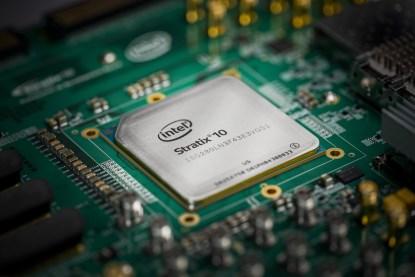Last year, the folks at CPU giant Intel (which acquired FPGA vendor Altera) gave us a sneak peek at the capabilities, capacity, performance, and features of their forthcoming Stratix 10 FPGAs and SoCs (see Altera's Stratix 10 FPGAs & SoCs -- Breakthroughs in Performance, Integration, Density, and Security).
Earlier this year, they threw the veils open a little wider to provide more concrete details regarding the Stratix 10 MX family of System-in-Package (SiP) devices (see Stratix 10 MX: 1 TBps On-Chip Memory Bandwidth in Single FPGA).
Stratix 10 FPGAs and SoCs are fabricated using Intel's 14nm Tri-Gate process. Intel just announced that it has started sampling these devices to its customers (see Intel�s Stratix 10 FPGA: Supporting the Smart and Connected Revolution).
 (Source: Intel)
(Source: Intel)
Stratix 10 innovations and capabilities include:
- 2X the core performance and over 5X the density compared to the previous generation.
- Up to 70 percent lower power than Stratix V FPGAs for equivalent performance.
- Up to 10 TFLOPS of single-precision floating point DSP performance.
- Up to 1 TBps memory bandwidth with integrated High-Bandwidth Memory (HBM2) in-package.
- An embedded quad-core 64-bit ARM Cortex-A53 processor.
Devices like Stratix 10 FPGAs will help service providers, data centers, cloud computing, and storage systems to satisfy their insatiable demand for higher computational capabilities, lower latency, greater system flexibility, and increased power efficiencies (Click Here for more information).
Related posts:
- If You Could Have the Ideal Programmable Logic Device, What Would it Be?
- PROTO FPGAs Lower the Cost of Prototyping Rad-Tolerant FPGA-Based Systems
- What's Up With All Those New Use Models On An Emulator?
- 10 FPGA Design Techniques You Should Know
- Microsemi FPGAs Support Growing Demand for MIPI CSI-2 Interfaces
- Free Webinar: Introducing the XLR8 FPGA-based Arduino Uno Clone
- Flex Circuit Design Primer for Wearable/IoT Device
— Max Maxfield, Editor of All Things Fun & Interesting 

